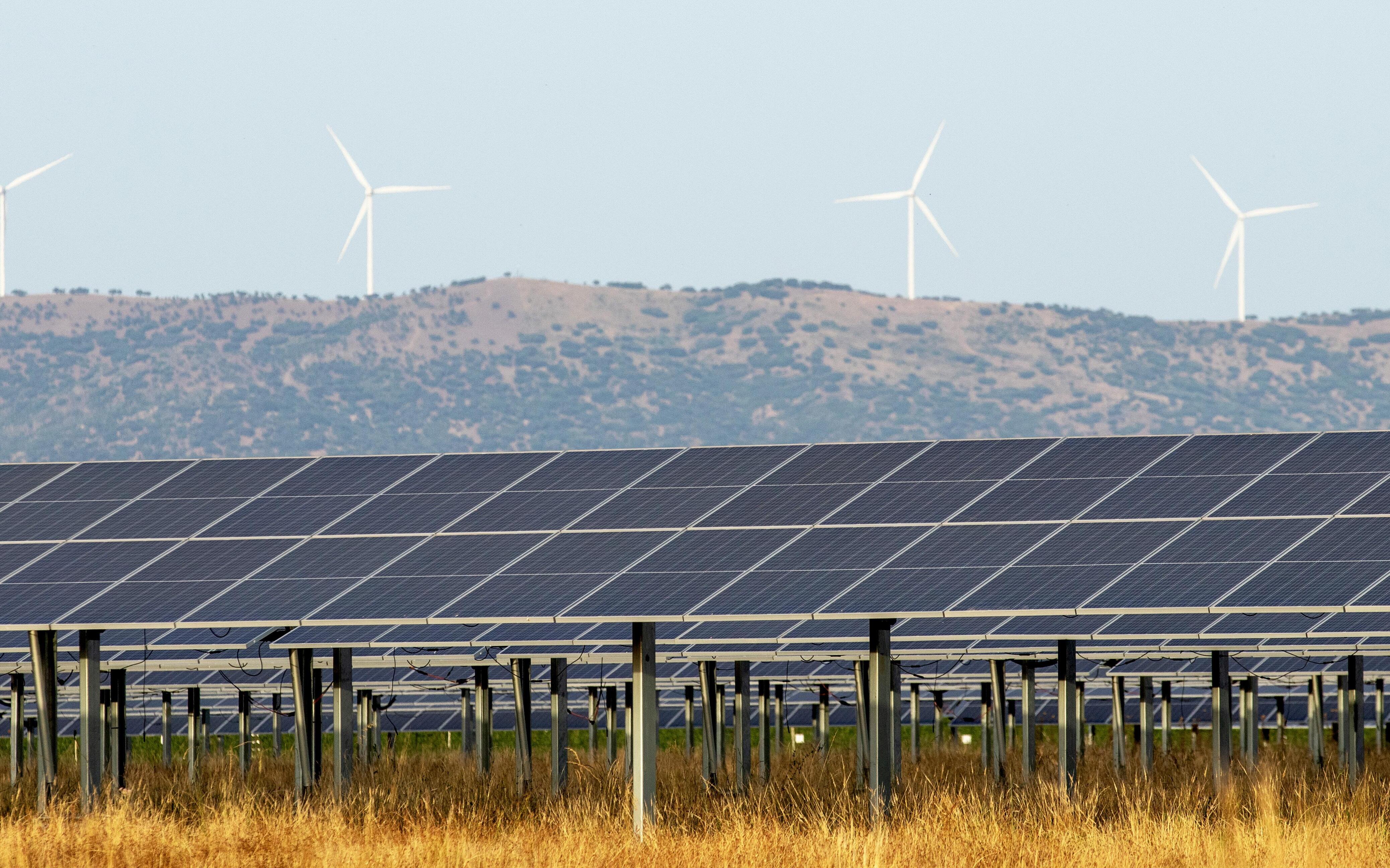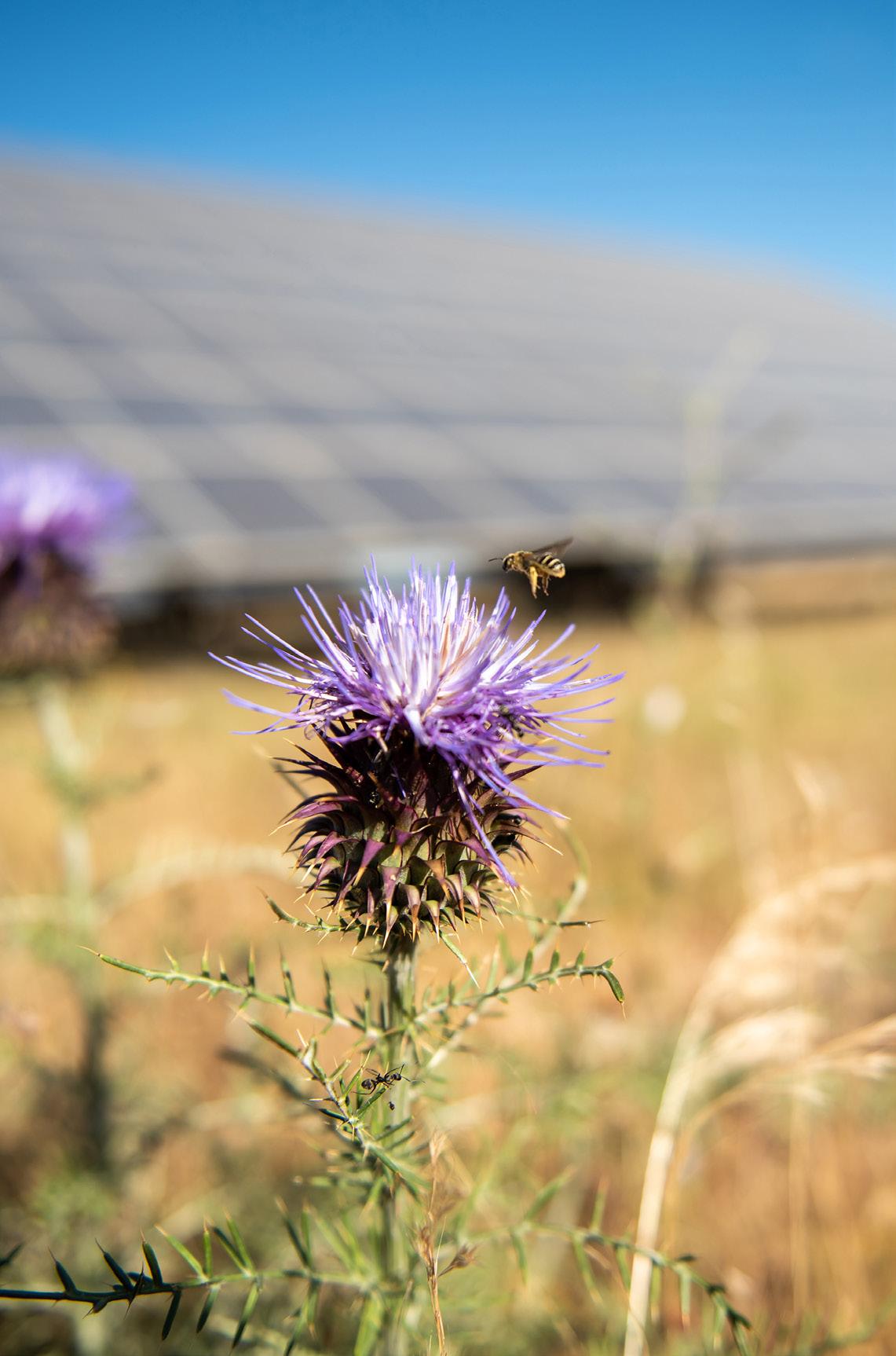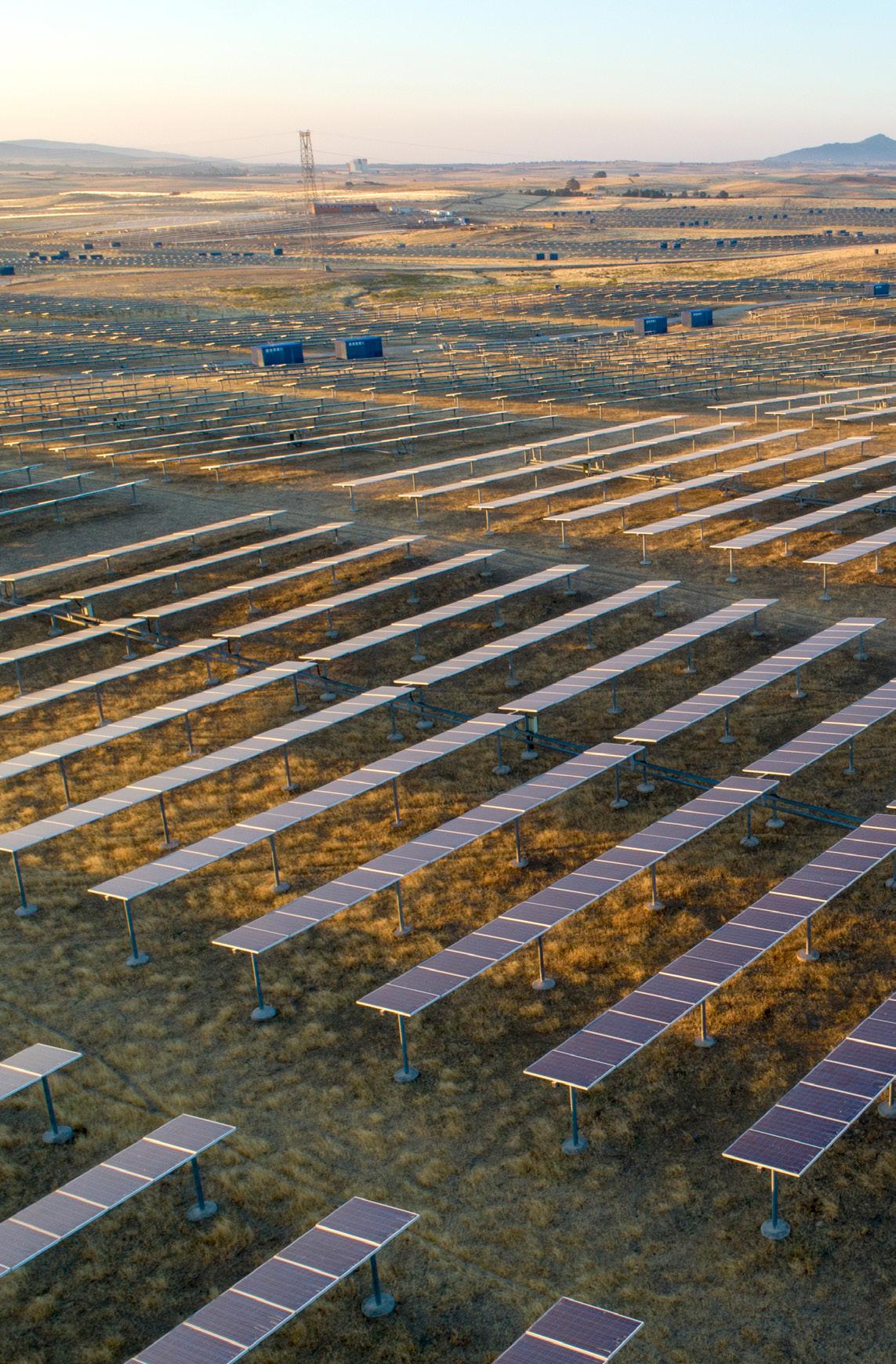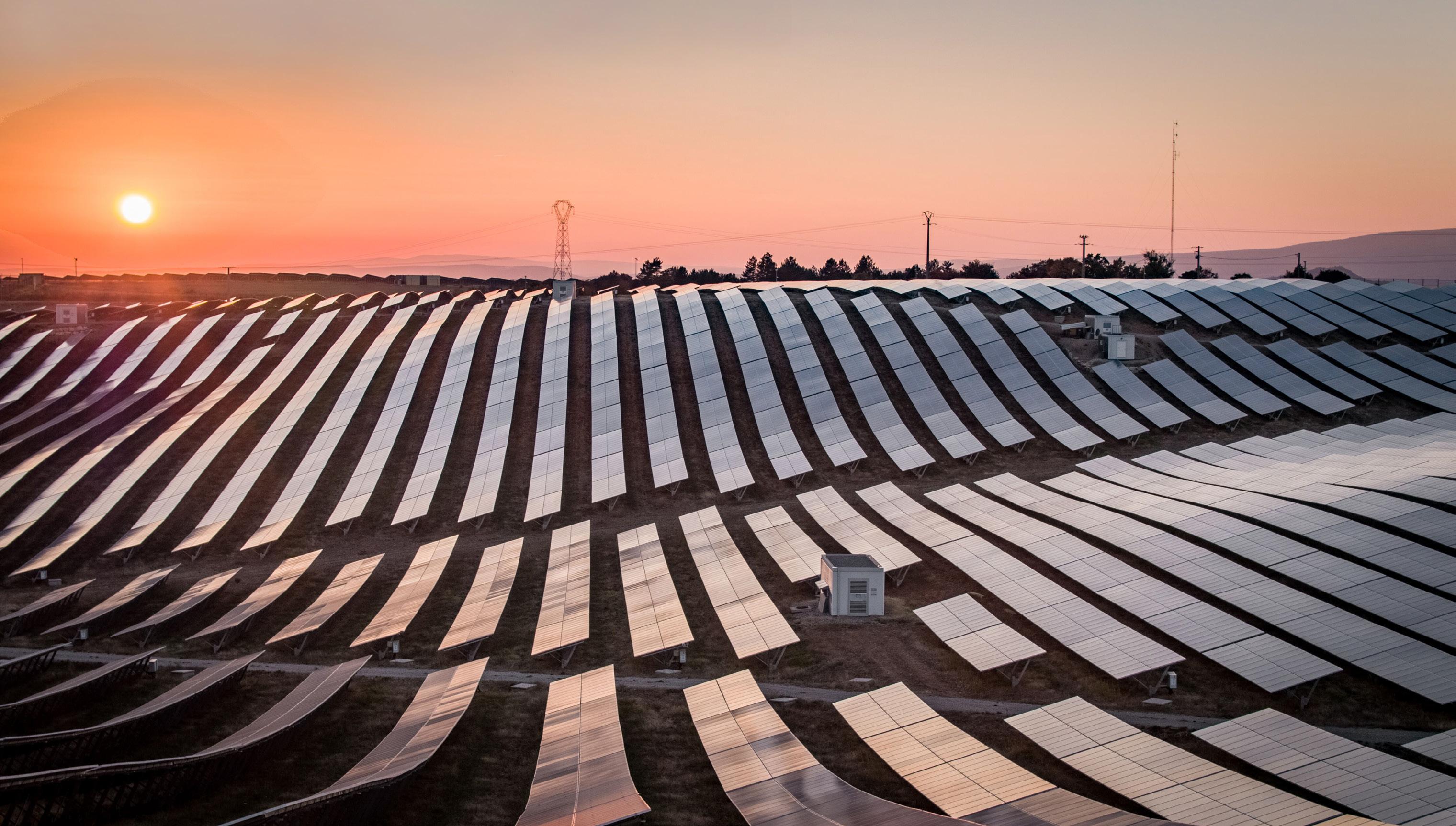Climate Transition Plan
Issued 2025





Issued 2025





“Renewable energy is central to our transition to a low carbon economy. Powering a bright future is what we do at Sonnedix - developing, building and operating renewable energy that makes renewable power the affordable, reliable and sustainable choice for our customers.
While we continue to grow we recognise that we have an important responsibility to drive our own transition to a net zero business. This transition is integral to our vision for our company. The good news for our investors and other stakeholders is that it is also creating value, securing attractive financing, delivering on our customer needs and driving operational efficiencies.
Our focus on powering a bright future draws together everyone at Sonnedix and helps us build our talented and engaged team. Our approach to driving the energy transition, and decarbonising our business is at the heart of our culture.
We are proud of the progress we’re making but recognise that decarbonising any business is a long term journey and requires a joint effort. That’s why we’re focusing on integrating decarbonisation into the internal governance and systems to ensure that our business strategy remains integrated with our transition plan. We know that we can’t do this alone - our success will rely on collaboration with our business partners and stakeholders, including our suppliers, to deliver the low carbon solutions we need. It also requires regulatory action to ensure a level playing field for all power companies and drive aligned action across our sector.
The engagement of our team is going to be critical to our decarbonisation effort. Thankfully the passion, expertise and capabilities we have as a team in delivering renewable solutions, will serve us well in our decarbonisation efforts.
At Sonnedix we are determined to be a leader in the transition to a low carbon economy. Our transition plan provides the road map for how we will deliver. I am proud to share it with you.”
“Powering a bright future is what we do at Sonnedix. This means that we’re committed to driving the energy transition at a pace and scale that meets the global ambitions established in the Paris Agreement. This work is urgent – we are continuing to see the escalating impacts of the climate emergency and know that the threats posed by the changing climate will have a serious negative impact on people and nature globally.
We recognise that we can have an important positive impact in two areas – by delivering low carbon power to the market, and also by improving the sustainability of our business and decarbonising our own operations.
To deliver we must continue to accelerate the growth of our business and decouple commercial results from our operational carbon emissions. This is why decarbonisation is integral to our business strategy.
Decarbonisation is also fundamental to our business culture and values, and is shaped by our purpose to power a bright future. Our transition plan lays out the steps that we will take to decarbonise and the plan has helped us to establish the organisational structures we need to deliver across the business. It will allow us to ensure that we are decarbonising at a pace that aligns with the climate science. Decarbonising our business is an exciting process that will involve all our team, working together, with our stakeholders, towards our shared goals.
By carefully monitoring our progress, and regularly reviewing our approach we will ensure that we stay on track with our delivery and that our approach continues to support our ongoing business success.
We look forward to working with you, our stakeholders, on this journey.”
Sonnedix is a global renewable energy producer dedicated to accelerating the energy transition. Our climate transition plan describes our roadmap to achieve net-zero emissions by 2040, aligning with global climate targets and the Paris Agreement. This plan integrates decarbonisation into every aspect of our business, ensuring that our growth is powering a bright future. By leveraging innovation, digitalisation, and industry collaboration, we are committed to continuing on our path to deliver a resilient, low-carbon business and energy sector.
We have set ambitious targets to decarbonise our business. By 2030 we are targeting reducing our Scope 1 & 2 emissions by 60% and reducing our Scope 3 emission intensity by 40% and we aim to reach net zero by 2040.
Since the launch of our net zero target in 2021, Sonnedix has made notable strides in reducing emissions and embedding decarbonisation across our operations. Some of our key achievements include:
• Signing The Climate Pledge, committing to net-zero carbon by 2040 and collaborating with peers across sectors to drive change.
• Increasing the purchase of green electricity to power our operations from 25% in 2021 to 64% in 2024 to drive a 23.5% reduction in absolute Scope 1 and 2 emissions.
• Increased engagement with key suppliers to align on decarbonisation objectives and drive future progress in Scope 3 reduction, with some initial progress already being made, including a 7% reduction in Scope 3 emissions intensity from 2023 to 2024.
Our transition plan is built to drive action and to tackle our biggest emission sources. It will adapt to integrate with changes to our business strategy. It is structured around six strategic action areas:
1 2 3
Decarbonised Supply Chain
Partnering with suppliers to reduce embedded emissions in materials and logistics.
Low Carbon Development
Using sustainable construction practices and alternative fuels.
Low Carbon Operations
Reducing emissions from on-site activities and vehicle fleets.
4 5 6 100% Renewable Power
Ensuring our supply is sourced from clean power.
Low Carbon Culture
Embedding sustainability into decision-making.
Collaborating with industry, policymakers, and investors to drive systemic change.
Our supply chain is a major driver of our carbon emissions, with our Scope 3 footprint typically accounting for over 95% of our emissions. Our purchase of PV panels currently accounts for the majority of our Scope 3 footprint. In the short term our priority is to drive our decarbonised supply chain and shift to 100% renewable power given the significant emission reduction opportunities. As we expand into battery energy storage solutions (BESS), and other new techologies, we are evaluating how this shift may reshape our emissions profile and are working closely with suppliers to understand the carbon footprint of these technologies.
To ensure the delivery of the transition plan and the continued alignment with our strategy we have established clear organisational forums, roles and responsibilities to oversee and drive implementation.

Sonnedix is a leading international renewable energy producer committed to powering a bright future. We believe in renewable energy’s potential to transform daily life, and work on building long-term partnerships to deliver a continuous, reliable and efficient supply of clean electricity to our customers and communities.
We have projects in operation, under construction, or in development across key global markets, from North and South America to Europe and Asia. We continue to expand our footprint through the acquisition, development, and conversion of solar, wind, and storage projects worldwide. By harnessing renewable energy sources, Sonnedix generates clean electricity that powers homes and businesses while avoiding the emission of millions of tons of CO 2e each year.
Our purpose, to “Power a Bright Future,” reflects our commitment to delivering sustainable energy solutions that create lasting environmental and social value. Innovation, efficiency, and scalability are at the core of our approach, and we continuously invest in advanced technologies, data-driven asset optimisation, and nextgeneration renewables solutions to maximise output, lower costs, and accelerate global renewable adoption. This commitment to drive decarbonisation, by delivering renewable power and by transitioning to net zero operations, is both what we do and also central to our culture and way we work.
Sonnedix has a strong presence in key renewable energy markets across Europe, the Americas, and Asia.
The science is clear: climate change is accelerating, and we are running out of time to limit global temperature rise. Recent years have seen record-breaking heat and increasingly severe weather events, causing widespread disruption around the world. The World Meteorological Organization continues to report alarming trends, reinforcing the urgency of climate action.
To mitigate these risks, the Paris Agreement set a critical target of limiting global warming to 1.5°C above pre-industrial levels. Achieving this goal requires an economy-wide transition to low-carbon energy sources. Renewable energy plays a pivotal role in displacing fossil fuels and reducing carbon emissions. As energy demand continues to rise, expanding renewable capacity is essential to meeting global electricity needs sustainably.
We are committed to playing our part to help meet this target, both through growing our business to deliver more renewable power and through our transition plan and targets that describe how we will, in parallel, decarbonise our business.
Sonnedix is uniquely positioned to be a leader through this transition, delivering clean power at scale and advancing the technologies needed to make renewable energy even more efficient and accessible.
As a global renewable energy producer, we are supporting the energy transition and are a key enabler of a decarbonised future.
Sonnedix’s transition plan is designed to integrate with, and support execution of, our business strategy to grow and optimise our operations (see www.sonnedix.com/offer ). Decarbonising while driving business growth will deliver long-term and sustainable value for investors and the communities we serve.
Our transition to a net zero business will enable access to opportunity and is central to our operational excellence approach. Our transition plan provides an agile framework that will evolve with the business and couples a long term focus on delivering net zero by 2040 with flexibility to adapt to market needs. It guides how we integrate decarbonisation alongside our growth ambitions and vision for a low-carbon global energy system and will evolve with our business.
As most of our greenhouse gas emissions are generated outside of our direct control, there is a critical need to work closely with our suppliers to drive emissions reductions and ensure that every stage of our value chain aligns with our sustainability goals. By fostering these partnerships and building an ecosystem around clean energy, we will be able to contribute to a more resilient and low-carbon future for all.
Delivering will require us to have a long-term mindset and enduring commitment—working in collaboration with policymakers, peers, and other stakeholders to navigate and advance policies that support decarbonised supply chains, support renewable energy expansion and investment.
Sonnedix’s transition to net zero is not just an environmental imperative—it is a strategic opportunity. As renewable energy adoption accelerates globally, we are positioned for continued growth, resilience, and leadership in the sector. Our proactive approach to sustainability ensures regulatory compliance, enhances investor confidence, improves access to green and sustainable financings and strengthens our competitive edge in a rapidly evolving market.

Our transition plan is our strategic roadmap for reducing carbon emissions in line with global climate targets and achieving net zero emissions by 2040. It is a dynamic approach that will adapt to drive our delivery as our business evolves
The plan identifies six strategic levers for decarbonisation. These levers will drive our transition in alignment with our business and growth strategy. Against each of these levers, the plan describes our key emission reduction opportunities and the specific actions we will take. Our transition plan is underpinned by our decarbonisation principles that shape our approach to delivering on the plan: our data-driven mindset, our emphasis on innovation, digitalisation and collaboration and our commitment to a just transition and reducing our environmental impacts.
The plan identifies key responsibilities and the governance we will use to drive and oversee delivery. It also incorporates a delivery plan and a series of metrics that we will use to track and report our progress.
The transition plan will enable Sonnedix to leverage opportunities in financing in line with rapidly changing market expectations. It will support our customer acquisition and help us maintain competitive advantage in commercial processes. It is essential for attracting and retaining top talent and supporting the engagement of our team and ongoing development of our culture and purpose of powering a brighter future.
As we expand our renewable portfolio we will be exposed to different carbon emission challenges and opportunities. We will continue to adapt, assessing the carbon implications of changes, ensuring our measurement framework continues to effectively track our progress and targeting our action for greatest decarbonisation impact.
Procure low carbon equipment and support our suppliers to decarbonise
LOW CARBON DEVELOPMENT
Design low carbon projects and decarbonise construction
Decarbonise our assets and offices
Build the low carbon capabilities, digital systems and culture we need to deliver
Our decarbonisation principles describe how we put our approach into action and define how we work, ensuring that decarbonisation is embedded in our work to support the energy transition through our operations, decisionmaking, and partnerships.
DATA-DRIVEN - We use accurate, timely data to guide strategy, ensuring every decision is backed by insights and measurable impact.
INNOVATION - We explore new technologies, business models, and processes to drive efficiency and sustainability, refreshing our thinking continuously.
DIGITALISATION - We harness AI and other digital tools and technology to accelerating decarbonisation, integrating solutions that enhance productivity, sustainability, and profitability.
Transition all our purchased power to renewables
Build a low carbon ecosystem through engagement and advocacy
JUST TRANSITION - We take a holistic approach to decarbonisation, ensuring our transition is fair, inclusive, and safe for workers, communities, and stakeholders.
COLLABORATION - We engage employees, suppliers, and industry partners to drive collective action towards achieving net zero.
These principles serve as the foundation for our transition plan, ensuring that decarbonisation is not just a target, but a fundamental part of how we do business.
Since developing our first sustainability strategy in 2020, we have moved from ambition to action—gathering the right data, enhancing our systems, and creating a clear plan to transform our assets, operations, and business models for a successful transition to net zero. In 2021, we become one of the first 100 signatories of the Climate Pledge and committed to reaching net-zero by 2040. The Climate Pledge brings the world’s top companies together to accelerate joint action, cross-sector collaboration, and responsible change. Through participation we help set a strong signal of the need to decarbonise and build the market for low carbon technologies. With a robust transition plan we are now strengthening our approach to better position ourselves to achieve our goals.
We are committed to accurately measuring, continuously improving, and transparently reporting our carbon footprint across all scopes of emissions to ensure that we identify key emission sources, track progress, and implement effective reduction measures. To illustrate this journey, the following graphs present our year-on-year absolute greenhouse gas emissions since our baseline years.
For more information on our emissions breakdown and progress against targets to date, see our sustainability report.
Acting in six strategic actions will drive our transition to net zero. Each presents a unique opportunity to reduce our carbon footprint. We identify key emission reduction opportunities in each area and use reduction potential and degree of control to describe the impact of each opportunity. Reduction potential reflects by how much specific actions can lower emissions—classified as very high, high, medium, or low . Degrees of control describes Sonnedix’s ability to implement the actions: full control for (majority) owned assets, partial control where we can influence an action but cannot fully determine or implement it on our own, and limited control where we depend largely on external actors. Those labelled as ‘enablers’ are actions which do not directly contribute to emissions reduction, but they are essential for enabling the success of other emissions-reducing initiatives.
Our supply chain represents our biggest opportunity for carbon reduction—but also one of the most complex. To deliver we will embed carbon reduction into how we specify needs, our supplier selection and procurement processes, and ongoing management of our partnerships.
Ensure PV panel suppliers meet reduction targets aligned with our own, including by shifting to low-carbon PV panels. This means that we will be encouraging the shift to PV units that use polysilicon produced in lower carbon manufacturing processes.
and shipping.
Integrate decarbonisation into supplier selection and framework agreements, using contracts to drive alignment.
Engaging with inverter, wind, and BESS suppliers to meet reduction targets that drive lower-carbon production methods.
Ensure other suppliers and service providers disclose GHG data and align with our reduction targets.
We will work to incorporate the use of low-carbon materials and processes from design through to execution together with our development partners. This may include alternative fuels, electrifying construction equipment, sourcing lower-carbon steel and concrete, and adopting greener construction methods.
Embed decarbonisation requirements into construction framework agreements to drive alignment.
Assess the carbon footprint of the concrete and steel we use and develop a plan to reduce our footprint.
Transition from diesel generators to lower-carbon alternatives, including renewable power and alternative fuels.
Electrify construction machinery or switch to alternative fuels.
Optimise site selection and project design to reduce civil works and the need for energy intensive machinery.
As a renewable energy producer, powering all our operations with 100% renewable electricity is a key priority. While we have full control over our power purchasing approach, securing suitable renewable supply remains a challenge in some regions. Where direct procurement is not feasible, we will explore alternative green energy schemes to ensure alignment with our commitment. Emission reduction opportunity Emission reduction opportunity
We have direct control over our sites and offices and promote measures to reduce energy consumption such as energy-efficient and motion-sensing lighting systems, as well as heating and cooling devices that optimise energy use. We’re also replacing refrigerant gases with lower-carbon alternatives and transitioning to a low-carbon vehicle fleet.
Phased replacement of refrigerants with lower-carbon alternatives.
Shift all office electricity procurement to renewable sources or verified green energy attributes where necessary.
Ensure all operational sites transition to renewable electricity or equivalent green energy attributes where direct procurement is not possible.

Driving the global energy transition is at the core of our purpose to build a brighter future. It draws together and energises our team and is at the heart of our high performing culture. To support our own decarbonisation journey, we are building the capabilities, systems, and culture needed to accelerate progress. This means ensuring clear responsibilities, building our decarbonisation expertise, and empowering employees to decarbonise their areas of the business.
Engage employees through policies, training, and ongoing communication.
Establish clear governance, including our steering group to oversee ownership, responsibilities, and corporate strategy.
Make AI and digital technology an enabler of our decarbonisation journey, from advanced data analytics to operational optimisation.
Emission reduction opportunity
The right policies, standards, and regulations are essential to achieving net zero— not just for us, but for our entire value chain. We will seek to influence suppliers, contractors and other partners, industry groups, and policymakers to advocate for regulatory shifts that support decarbonisation. By collaborating across the renewables sector, we can help create a level playing field that accelerates action and aligns incentives. We recognise that without industrywide action, driven by effective policies and incentives, our ability to meet our targets may be constrained.
Engage our financial services providers (e.g. lenders) to support our decarbonisation.
Collaborate through multi-stakeholder platforms such as The Climate Pledge and industry alliances to drive sector-wide action and share best practices.
Advocate for regulatory and policy changes, including engaging on PV and BESS decarbonisation and strengthening local supply capabilities.
The transition to a low-carbon economy presents both opportunities and investment considerations for Sonnedix. The transition plan is designed to align with and support our strategy for growth. It will provide opportunities to leverage financing arrangements that support and reward carbon emission reduction. It will help attract and retain customers who are aligning power purchasing with sustainability goals, and it will drive continued commercial advantage.
While some investments may be required over time, overall financial implications in the short-run are expected to be limited and can be mitigated through maximising the financial opportunities presented by the transition. The immediate focus will be on opportunities that will have a high impact on emissions reduction with relatively low capital requirements. Strategic phasing of our implementation will further mitigate the financial impacts whilst ensuring we deliver against our long-term targets.
Our approach to reducing our Scope 1, 2, and 3 emissions is science-based and aligned with the Paris Agreement, ensuring a trajectory that supports limiting global temperature rise to 1.5°C.
The targets were developed using modelling to explore the reduction opportunities available to us and the sciencebased emission reduction pathway. We used cross-functional input to ensure that our assumptions are prudent and reflect business conditions and the external regulatory and market environment.
In the longer term, we are committed to reaching net zero emissions by 2040 while continuing to develop and grow the business. Our targets balance sustainability with business change and expansion, ensuring that emissions reduction remains a core pillar of our corporate strategy.
Our targets will remain responsive to strategic business developments, market conditions and the evolution of technologies, and will be regularly reviewed in line with the business strategy.
For Scope 1 and 2, we have set ambitious near-term targets, aiming for a 60% reduction in absolute Scope 1 and 2 emissions by 2030 compared to the 2021 base year.
Our Scope 1 and 2 emissions consist mainly of emissions associated with fuel-used in Sonnedix-owned equipment and leased vehicles, refrigerants in air conditioning units and procured electricity for powering our operational assets.
Despite an ever-increasing number of assets in operation, and the resulting increase in production of electricity, our absolute Scope 1 and 2 emissions have reduced from our 2021 baseline by 23.5% as of 2024. In addition, our Scope 1 and 2 intensity has decreased by 65%. This has been driven by an increase in the share of green electricity procured from 26% of total electricity in 2021 to 64% in 2024.
We recognise that our emission reduction pathway will be influenced by the mix of technologies we deploy as our business grows.

In 2024, we piloted replacing diesel-powered vegetation maintenance with autonomous, solar-powered robots on our PV plants in France. Following its success, we aim to expand this low-carbon solution, using both gridconnected and solar-only charging stations to further reduce emissions and operational costs. By replacing fossil fuel-powered machinery with this innovative, low-carbon solution, we are reducing emissions and promoting environmentally friendly practices on our sites — showcasing how technology can drive both sustainable practices and operational efficiencies.
We have set an interim Scope 3 reduction target of 40% intensity reduction by 2030 and reaching net zero by 2040, against a 2023 baseline. In 2024, we began making progress, achieving a 7% reduction in intensity from 2023.
Our Scope 3 emissions are primarily driven by the procurement of key equipment for new sites, falling under the capital goods category, which currently represents by far the largest source. Other contributors include transportation and distribution, fuel and energy related activities, purchased goods and services, and several less material categories. Our net zero targets for Scope 3 are based on an intensity approach, which indexes our emissions against our procurement of equipment to monitor how we are decoupling our emissions from our business activities.

Decarbonising our supply chain is our greatest opportunity to reduce emissions, and we’re making meaningful strides in this transition. By consolidating our PV module procurement through framework agreements and prioritising suppliers with clear decarbonisation commitments, we are leveraging our purchasing power at scale to drive measurable impact and advance our long-term sustainability goals.
Our key solar suppliers have established decarbonisation plans and targets, making notable improvements to the embodied carbon in their products, with progress certified through product carbon footprints. These advancements reinforce the importance of supplier engagement in driving sustainability across our value chain.
To further support this transition, we hold dedicated decarbonisation workshops with our key suppliers, providing a platform to assess their progress, identify bottlenecks, and explore opportunities for joint action. By embedding carbon reduction into our procurement decisions and fostering deep engagement, we are supporting a resilient, low-carbon supply chain that accelerates our transition to net zero.
A key step in our decarbonisation efforts is identifying the areas with the greatest potential for emissions reduction, allowing us to focus our efforts where they can have the most impact. To support this, we have developed a decarbonisation model that helps us prioritise actions based on their expected contribution to our emissions targets. The resulting waterfall diagrams illustrate the expected impact of each initiative, based on current assumptions, and outline our pathway to net zero.
Given the significant emission reduction opportunities of using green electricity to run our operations and procuring lower-carbon renewable equipment for new projects, our priority in the short term is to drive decarbonisation in these areas. In addition, in the short term we will also tackle other areas that, while lower in reduction potential, are within our direct control, such as leased vehicles, refrigerants, and similar operational sources. We expect these to change as our business and external environment continues to change.

The pace of travel will be key, and our roadmap describes how we plan to phase our activities to deliver. We will prioritise actions with the highest potential for emissions reduction or level of control, while our medium- to long-term efforts will be shaped by industry developments and technological innovation. The timeline below is indicative and may evolve in response to market conditions, supplier engagement, and technology readiness.
Our organisation and governance structure is intended to drive a culture of ownership across Sonnedix.
BOARD Oversee decarbonisation
SENIOR LEADERSHIP TEAM (SLT)
ESG TEAM
CLIMATE WORKING GROUP
Reports to the Board and is accountable for delivery, monitoring progress and integrating the transition plan fully with business strategy
Leads decarbonisation strategy, tracks and communicates performance and provides implementation support to relevant business areas, including employee and partner engagement and training
Cross-functional collaboration of key function leads from Supply Chain, Construction, Operations, Finance, Commercial and Legal, responsible for monitoring and supporting implementation
Structured and regular reporting will provide transparency, accountability, and continuous monitoring toward our decarbonisation goals. Our reporting processes will include:
• The SLT and Board will conduct annual reviews to assess progress and refine actions as needed.
• Quarterly Climate Working Group meetings will ensure targets remain on track and enable timely course correction.
• Annual carbon emission footprinting will allow us to track our progress in reducing emissions.
• External assurance will be secured on key carbon-related performance indicators to drive continuous improvement in data quality, supported by digital enhancements and integration with operational systems.
• Annual updates will be provided on our transition plan progress through our sustainability and annual reports.
The transition plan follows a structured approval process, ensuring alignment with business strategy, investment priorities, and risk management frameworks. The plan has been approved by the SLT and Board and progress against this plan will be reviewed annually (or more frequently as required) by both parties.
Our governance approach ensures that our climate transition plan remains integrated with the business strategy, supporting resilience, competitiveness, and long-term success.

As part of our transition plan, we have established a Climate Working Group to embed decarbonisation across all functions. This group drives emissions reduction by executing key initiatives, solving bottlenecks, and integrating sustainability into daily operations.
A crucial element of building a low-carbon culture is our employee engagement plan, which fosters education, transparent communication, collaboration, and recognition of achievements. By embedding these principles and leveraging collective expertise, we drive progress while ensuring shared responsibility for emissions reduction.
